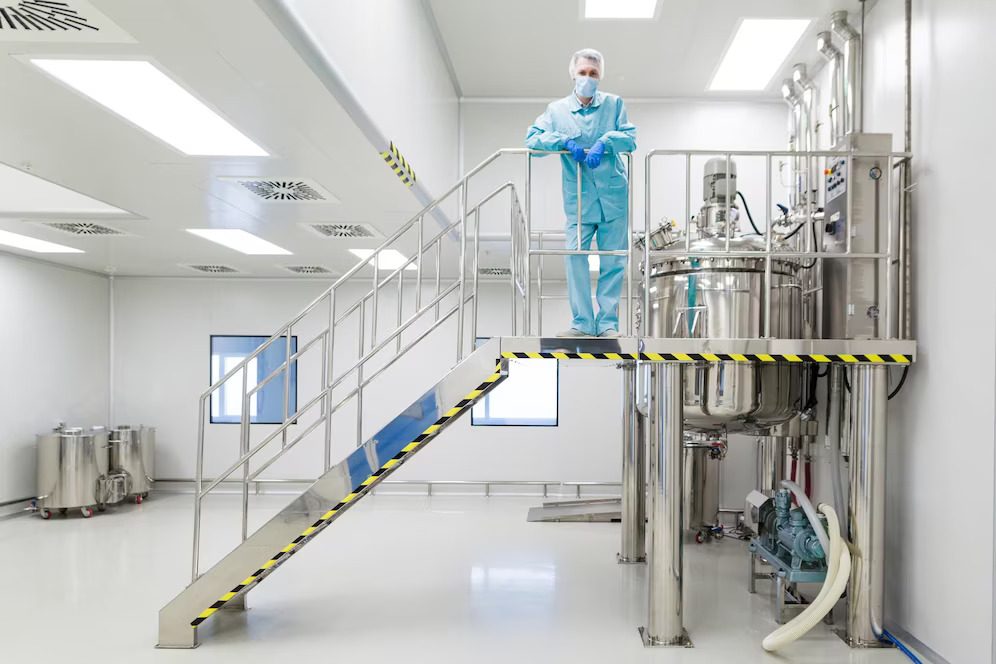Chemical Manufacturing: 5 Tips to Implement Safety Best Practices
Chemical manufacturing is a high-risk business due to the nature of raw materials and end products. A recent incident at Dow Chemicals Company in Plaquemine, Louisiana, established the dangers of being around such plants, let alone working in them. An apocalyptic explosion and a huge fireball in the factory led to the local authorities issuing stay-in orders for residents.
That’s just the tip of the iceberg because surveys show that the US averages a chemical mishap every two days. From spills to transit accidents and fires at factories, more and more such disasters make the news these days. Most events are preventable, specifically in controlled environments such as industrial plants.
As a chemical manufacturer, you need to consider safety more than a regulatory guideline. Protecting your plant, people, and community is your responsibility. You must do your bit by defining and implementing safety best practices in your chemical manufacturing plant.
5 Tips to Implement Safety Best Practices In Chemical Manufacturing
Here are some actionable measures to prevent accidents and save lives and work hours in the industry:
Outline a Safety Plan
Research suggests that chemical-related risks are classified mainly as human errors, defects in process facilities, and multi-cause accidents. Manufacturers must understand these risks and outline safety plans to address them effectively. A well-defined plan can prevent accidents in the first place and provide guidelines to minimize the damage if they do occur.
According to research, a safety plan should include factors like training, operating procedures, PHAs (process hazards analysis), change management, emergency preparedness, and safety culture. Further, it must follow industry-specific compliance guidelines to ensure a safe working environment. After outlining a safety plan, you must ensure everyone working in the plant is on the same page.
Invest in Precision Equipment
High-quality precision equipment is the cornerstone of chemical manufacturing safety. As a manufacturer, you shouldn’t cut corners with these machines and tools because they go a long way in creating a safe work environment. SmartMeasurement notes the significance of precision in the industry vertical, where even a minor inaccuracy can lead to a disaster.
Flow meters enable a controlled environment by measuring the exact quantity of fluids passing through pipes or channels. A Coriolis meter is ideal for hazardous environments with high temperatures, extreme pressures, and corrosive fluids. With stable and uninterrupted measurements, there is hardly a chance of going wrong with precision.
Provide Training and Safety Essentials to Workers
Did you know that human error causes 90% of industrial accidents? The number is a stark reminder of the value of worker training in the hazardous industrial sector. Even the most skilled and experienced employees may not know how to prevent or respond to chemical leaks and spills. Train all new workers on standard operating procedures (SOPs), covering all chemicals in your manufacturing settings.
Providing safety essentials such as gas masks, hazmat suits, and eyeglasses is equally crucial. Workers must wear them each time they are close to chemicals and hazardous environments. Ensure that the safety gear is easily accessible so that workers need not struggle to locate them during emergencies. Another tip is to implement regular checks for safety equipment.
Maintain a Clean and Clutter-Free Environment
A clean and clutter-free environment can lower the risk of chemical plant accidents. Slips and falls cause over a third of major workplace injuries. Even as the threat of chemical spills is a bigger concern in your industry, you cannot overlook common risks. Fortunately, basic precautions such as reducing clutter, organizing the work area, and avoiding wet floors can reduce the risk of mishaps.
Keep the containers labeled and stored safely to reduce clutter in chemical plants. Workers should have access to a disposal area to safely get rid of chemicals. Also, provide a place to leave work clothes in the plant to prevent exposing their families to hazardous materials.
Create a Chain of Responsibility
Statistics show that 30 incidents of chemical spills were recorded in the first seven weeks of 2023 alone, indicating the gravity of the situation. Industrial safety isn’t something you can leave to chance in the chemical sector. Besides having a clear policy and SOPs, you need to create a change of responsibility in the industrial process.
Employees should know what they need to do at their level and to whom they should report in the event of an emergency. A clear chain of command enables them to respond better if something goes wrong. Also, have substitutes at hand should someone fall sick.
The Bottom Line
Risks abound in manufacturing settings, but they are worse in chemical manufacturing plants. A disaster may be around the corner if you fail to pay attention to safety. Implementing a safety plan in chemical manufacturing plants is straightforward, provided you are willing to foresee and address risks.
At the same time, you must have a disaster management and response plan because you cannot go complacent about the impending threats. You can rely on this checklist because it covers all fronts.


















